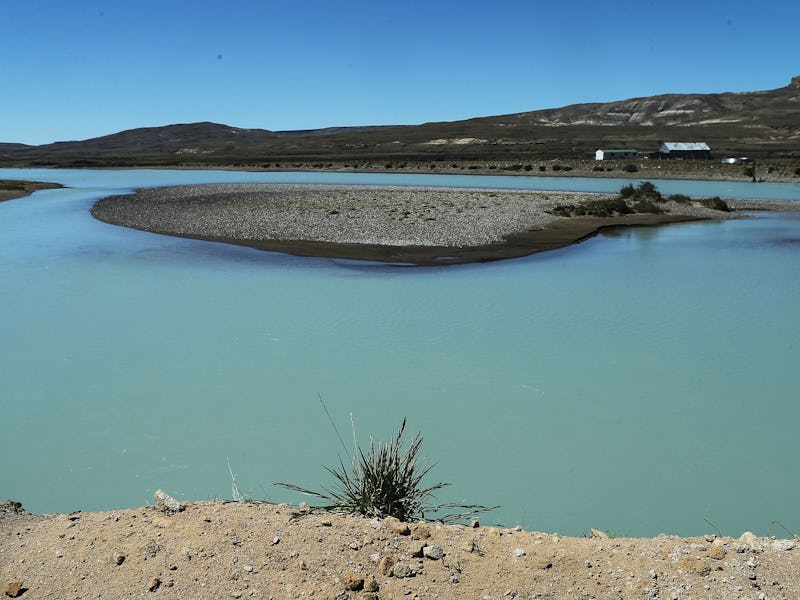Researchers Found a Whole New Jurassic World of Fossils in Patagonia
They've been sitting on 23,000 square miles of dinosaurs for four years.

It took them awhile, but a team of paleontologists in Argentina recently announced that they had discovered a gigantic swathe of fossil-rich land in Patagonia four years ago. The researchers say that the site could cover as much as 23,000 square miles of the Patagonian highlands, according to their paper in Ameghiniana, an online paleontology journal.
Juan Garcia Massini, a geologist at the Regional Center for Scientific Research and Technology Transfer, or CRILAR, said the site could yield an unprecedented amount of fossils.
“No other place in the world contains the same amount and diversity of Jurassic fossils,” Massini told AFP.
Massini estimates the fossils are between 140 and 160 million years old, placing most of them in the Jurassic and very early Cretaceous periods. According to the Argentinian website Agencia CTyS, the fossils include strikingly intact remains of early nematodes and insects.
The fossilized compound eye of a 140 million-year-old fly larva.
The above fossilized eye was found in a section of the Patagonian highlands called La Bajada or “The Descent,” which is one of several areas thought to have particularly high concentrations of fossils.
Map of the new discovery sites, with hot spring fossil deposits marked in red.
According to Massini, many of the fossils were exposed when erosion gradually wore away soil, allowing the paleontologists to see how things would have looked in the Jurassic period.
“You can see the landscape as it appeared in the Jurassic—how thermal waters, lakes and streams as well as plants and other parts of the ecosystem were distributed,” Massini said.
Many of the fossils were remarkably preserved, like the nematodes below. Ignacio Escapa of the Egidio Feruglio Paleontology Museum told AFP that the team had found “a wide range of micro and macro-organisms,” which means the nematodes may only be the tip of the ancient-dead-thing iceberg.
Preserved micro-organisms could help researchers understand more of the evolutionary tree.
Massini thinks some were preserved in less than a day, making each rock full of possibility for a new discovery. “You can see how fungi, cyanobacteria and worms moved when they were alive,” he said. Massini told CTyS that the site will be studied by researchers for decades, like the Rhynie Chert site in Scotland, where similarly unique circumstances resulted in unusually well-preserved fossils. But Massini said the slow erosion in the Deseado Massif mountain range could produce even more exquisitely preserved fossils than Rhynie Chert, which was first discovered in 1910 and is still being studied.
It took four years, but this is definitely a case of “better late than never” — in the grand scheme of things, waiting four years to announce a discovery that may mean scientific progress for the next century doesn’t seem that bad.